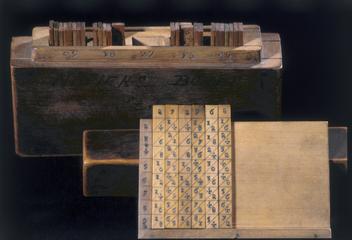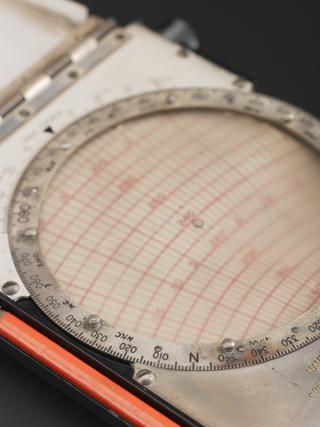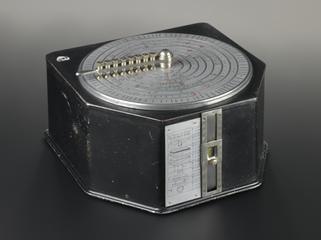Michelson 80-Element Harmonic analyser (received badly smashed, repaired in Museum Workshop) with 3 Framed diagrams.
American physicist Albert Michelson studied several natural phenomena including the different frequencies of light emitted from a flame. His research and experiments involved many laborious calculations of Fourier analysis (mathematical method that breaks down periodic functions into a sum of sine curves-the simplest waves-of different magnitudes and frequencies). Tyring to automate the process he came up with this device,a mechanical analog computer, that can both analyse a function to its simplest sinusoids and synthesise by adding together sines to produce a function. A sine curve is a fundamental unit of mathematical physics used in fields as diverse as acoustics, seismology, meteorology, electronic engineering and quantum physics.
Building on previous examples of harmonic analysers and specifically Lord Kelvin’s example for the analysis of tidal waves (also in the Science museum’s collection), Michelson replaced the stretching ropes at Lord Kelvin’s device with elastic springs at his initial 20-element analyser in 1897 (it could calculate up to 20 sine waves) increasing the number of elements that could be calculated.
Encouraged by the promising results, he built this 80-element model a year later which he described in detail at an article that he co-wrote with physicist J.A Stratton in 1898 and it was manufactured by William Gaertner & Co. of Chicago, predecessor of the Gaertner Scientific Corp., but few were sold. This example was acquired by the museum in 1904 and was used for curve analysis by the aviation company de Havilland Aircraft Co Ltd and the Admiralty Research Laboratory.
In 2014, a production model sitting behind a glass case at the University of Illinois in the USA inspired a group of 3 educators to use it as a visual educational tool to demonstrate Fourier methods to students (Michelson himself taught physics at the University of Chicago). Bill Hammack, a professor of chemical engineering, Bruce Carpenter, associate director of the math department’s distance learning programme and Steve Kranz, an engineering research assistant, created a ‘visual tour’ of the machine and its operation through a video series and a book available for free online. Reflecting on Michelson’s impact on today’s technological world, they mention in their book: ‘Michelson’s harmonic analyzer built into many devices: it is in every mobile phone, every telecommunications system, and in every computer program that manipulates an image’.





